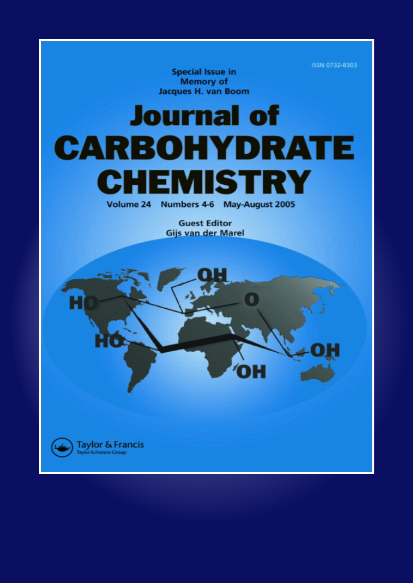Syntheses of propargyl glycosides of disaccharides of the capsular polysaccharides from serotypes 4, 7F, and 9V Streptococcus pneumoniae for glycoconjugate vaccines
IF 2.2
4区 化学
Q4 BIOCHEMISTRY & MOLECULAR BIOLOGY
引用次数: 0
Abstract
We have developed a means of presenting relatively small glycans in a context to make them T cell-dependent antigens. This approach requires synthesis of glycans that remain close to carrier proteins upon conjugation, allowing T cell recognition and generation of B cells that produce high-affinity antibodies and memory toward target pathogens. In this work, we describe the syntheses of three disaccharides of the capsular polysaccharides from serotypes 4, 7F and 9V Streptococcus pneumoniae (Sp) as propargyl glycosides for use in this vaccine strategy. While variations of these disaccharides have previously been synthesized, none have been synthesized with an alkyne as the linker. Incorporation of the alkyne led to redesign of the synthesis of each disaccharide. All three disaccharides were synthesized without use of benzyl protective groups, one of the most used carbohydrate protective groups due to its stability and ease of removal via hydrogenation. We report challenges that arose while synthesizing the targets with less common protective groups, such as naphthyl ethers, and the methods used to successfully overcome these challenges.
合成用于糖结合疫苗的 4、7F 和 9V 型肺炎链球菌荚膜多糖二糖的丙炔苷
我们已经开发了一种方法,在一个环境中呈现相对较小的聚糖,使它们成为T细胞依赖性抗原。这种方法需要合成与载体蛋白结合后保持接近的聚糖,允许T细胞识别和生成产生高亲和力抗体和对目标病原体记忆的B细胞。在这项工作中,我们描述了从血清型4,7f和9V肺炎链球菌(Sp)荚膜多糖中合成的三种双糖作为丙炔苷用于该疫苗策略。虽然以前已经合成了这些双糖的变体,但没有一个是以炔作为连接剂合成的。炔的加入导致了每个双糖的合成的重新设计。所有三种双糖的合成都没有使用苯基保护基团,苯基保护基团是最常用的碳水化合物保护基团之一,由于其稳定性和易于通过氢化去除。我们报告了在合成具有较少常见保护基团(如萘醚)的目标时出现的挑战,以及用于成功克服这些挑战的方法。
本文章由计算机程序翻译,如有差异,请以英文原文为准。
求助全文
约1分钟内获得全文
求助全文
来源期刊

Journal of Carbohydrate Chemistry
化学-生化与分子生物学
CiteScore
2.10
自引率
0.00%
发文量
20
审稿时长
1 months
期刊介绍:
The Journal of Carbohydrate Chemistry serves as an international forum for research advances involving the chemistry and biology of carbohydrates. The following aspects are considered to fall within the scope of this journal:
-novel synthetic methods involving carbohydrates, oligosaccharides, and glycoconjugates-
the use of chemical methods to address aspects of glycobiology-
spectroscopic and crystallographic structure studies of carbohydrates-
computational and molecular modeling studies-
physicochemical studies involving carbohydrates and the chemistry and biochemistry of carbohydrate polymers.
 求助内容:
求助内容: 应助结果提醒方式:
应助结果提醒方式:


